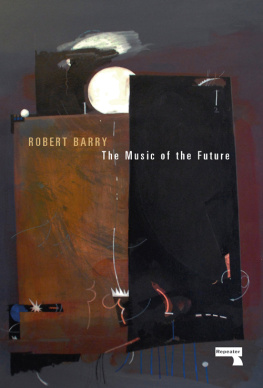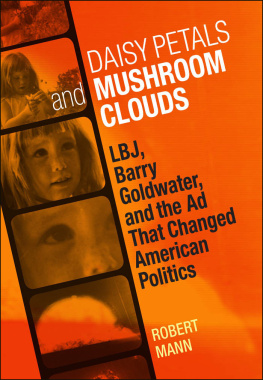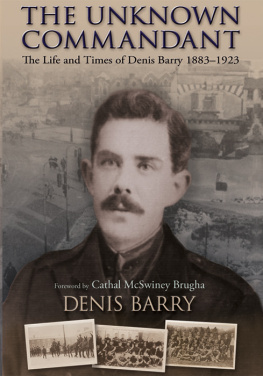Breaking the Thread of Life
Breaking the Thread of Life
On Rational Suicide
Robert L. Barry
First published 1994 by Transaction Publishers
Published 2017 by Routledge
2 Park Square, Milton Park, Abingdon, Oxon OX14 4RN
711 Third Avenue, New York, NY 10017, USA
Routledge is an imprint of the Taylor & Francis Group, an informa business
Copyright 1994 by Taylor & Francis.
All rights reserved. No part of this book may be reprinted or reproduced or utilised in any form or by any electronic, mechanical, or other means, now known or hereafter invented, including photocopying and recording, or in any information storage or retrieval system, without permission in writing from the publishers.
Notice:
Product or corporate names may be trademarks or registered trademarks, and are used only for identification and explanation without intent to infringe.
Library of Congress Catalog Number: 93-36053
Library of Congress Cataloging-in-Publication Data
Barry, Robert Laurence.
Breaking the thread of life: on rational suicide / Robert Barry.
p. cm.
Includes bibliographical references and index.
ISBN 1-56000-142-9 (cloth)
1. Right to die. 2. SuicideMoral and ethical aspects. 3. Suicide Religious aspectsCatholic Church. 4. Catholic ChurchDoctrines. 5. Assisted suicide. I. Title.
R726.B288 1994
241'.697dc20
93-36053
CIP
ISBN 13: 978-1-56000-923-8 (pbk)
ISBN 13: 978-1-56000-142-3 (hbk)
With the emergence of the AIDS epidemic, de facto legalization of widespread assisted suicide in Holland and the introduction and defeat of "aid-in-dying" referenda introduced by the Hemlock Society in California, Washington, Oregon, and then again in California, controversy has grown over legally, morally, and socially endorsing rational suicide. Increasingly, many people, including AIDS patients, are questioning whether suicide should be considered a morally legitimate option as they confront their death. In both Europe and America, debates about the morality of permitting voluntary euthanasia, or assisted suicide, are developing because of new perspectives on patient autonomy, the care and treatment of patients, and because of the increasing cost of providing high quality health care. The sharpness of these debates has also grown with the emergence of an international right-to-die movement and with increasing concerns over the economic efficiency of the international health care system. Voluntary suicide is the first choice of the international euthanasia movement as there are fewer legal, familial, or social obstacles than to involuntary euthanasia and it is easier to gain public endorsement of it. In response to this "right-to-die" rhetoric and demands for compassion, the morality and rationality of suicide has become quite popular, and in many circles, both in the popular and academic press, suicide has gained favor and broad appeal.
This book arose from concern over the mounting campaign not only in our nation, but also throughout the world, to give legal endorsement to suicide. As my understanding of the issue grew I not only learned how immensely difficult and complex the topic was, but also how much the traditional Catholic faith had contributed to the control of suicide in Western society. As my research broadened and deepened, I came to realize that the Catholic church probably did more than any other institution throughout Western history to curb suicide. At the present time, the traditional teachings and practice of the Catholic church on this issue is under sharp and, in many instances, unfair assault and my purpose is to trace their development and show their validity. In contrast to what these emerging trends in our society and in the world are asserting, the classical Catholic teachings have argued consistently and vigorously against allowing rational suicide. The Catholic church's condemnation of suicide has prompted accusations that these teachings lack both rationality and compassion, and it has been accused of standing against the traditions of our free society by holding that people can be forced to continue living against their wills and without their consent. It is charged with mistaking legitimate acts of privacy, free choice, autonomy, and selfdetermination with morally objectionable actions.
A great deal of gratitude is in order to many people. I must thank the Campus Honors Program and the Program for the Study of Religion of the University of Illinois for their support while writing this book. And the students and staff of the Newman Foundation also deserve much gratitude for the help, comfort, and support during this long project.
I would like to express my appreciation and gratitude to the editors and publishers of those journals who so willingly gave me permission to reprint within the covers of this book material that had originally appeared in their publications: , "Indirectly Intended Analgesic Suicide: Clarifying the Issues," was reprinted with appropriate changes by permission of the publisher, Issues in Law and Medicine, vol. 6, no. 2, Fall 1990. Copyright 1990 by the National Legal Center for the Medically Dependant and Disabled, Inc. I originally wrote this article and it was reviewed by Dr. James Maher, M.D. and initially entitled "Indirectly Intended LifeShortening Analgesia: Clarifying the Principles."
Introduction:
The New Face of Suicide
In 1987, Louise Orr was recuperating in a nursing home from a stroke. She and her husband, Richard, had been married for fifty-six years, and Richard came to see her every day while she was in the hospital. On 22 February 1987, he came to see her, and no one in the hospital thought there was anything peculiar about his visit. However, that morning, Mr. Orr shot Louise, apparently at her request. Their son Robert said it came as a total shock, and he was totally unaware of the loneliness and despair from which they were suffering.
On 27 April 1987, police in Tucson, Arizona found former University of Illinois assistant football coach John Tarwain and his wife Amelia dead in their, home, their deaths apparently resulting from a suicide pact. In recent years, they had become increasingly debilitated, as he suffered from heart disease and bladder cancer and she developed worsening Alzheimer's disease. The Tarwains had been longtime associates of Derek Humphry of the Hemlock Society, who had referred to their deaths as "self-deliverance."
In Princeton, New Jersey, seventy-five-year-old Rutgers University professor Richard Schlatter shot and killed himself to spare his family the pain and suffering of seeing him die from cancer.
"Mary Jane" wrote in USA Today that she and her husband have talked seriously between themselves and with their children of hiring an assassin to end their lives if they should become seriously ill or They said they had heard of so many people who suffered from severe and prolonged pain in their latter years, or who found themselves living in a state of mental or emotional exhaustion, that they decided that they would not want to continue living in such a condition. Being killed quickly, painlessly, and without warning seemed almost kind to them.
In Underwood, Minnesota, seventy-one-year-old Walter Lund applied for permission to establish a resort where the elderly, terminally ill, and dying could come to commit suicide and "die in a dignified manner." Calling his spa "The Last Resort," Lund believed that it would be a "dignified place to die" and it would provide legal services, including facilities for the survivors who come there to remember those who suicided there. A house legal officer would take care of last-minute legal affairs, and arrangements could be made for funerals, coffins, ministers, and music. However, this proposal was turned down by the town council and Minnesota courts persisted in holding that assisting a suicide carried at least a sevenyear jail term and a $14,000 fine. And while the "Last Resort" proposal failed, it is quite possible that something similar to it might succeed in the future.











